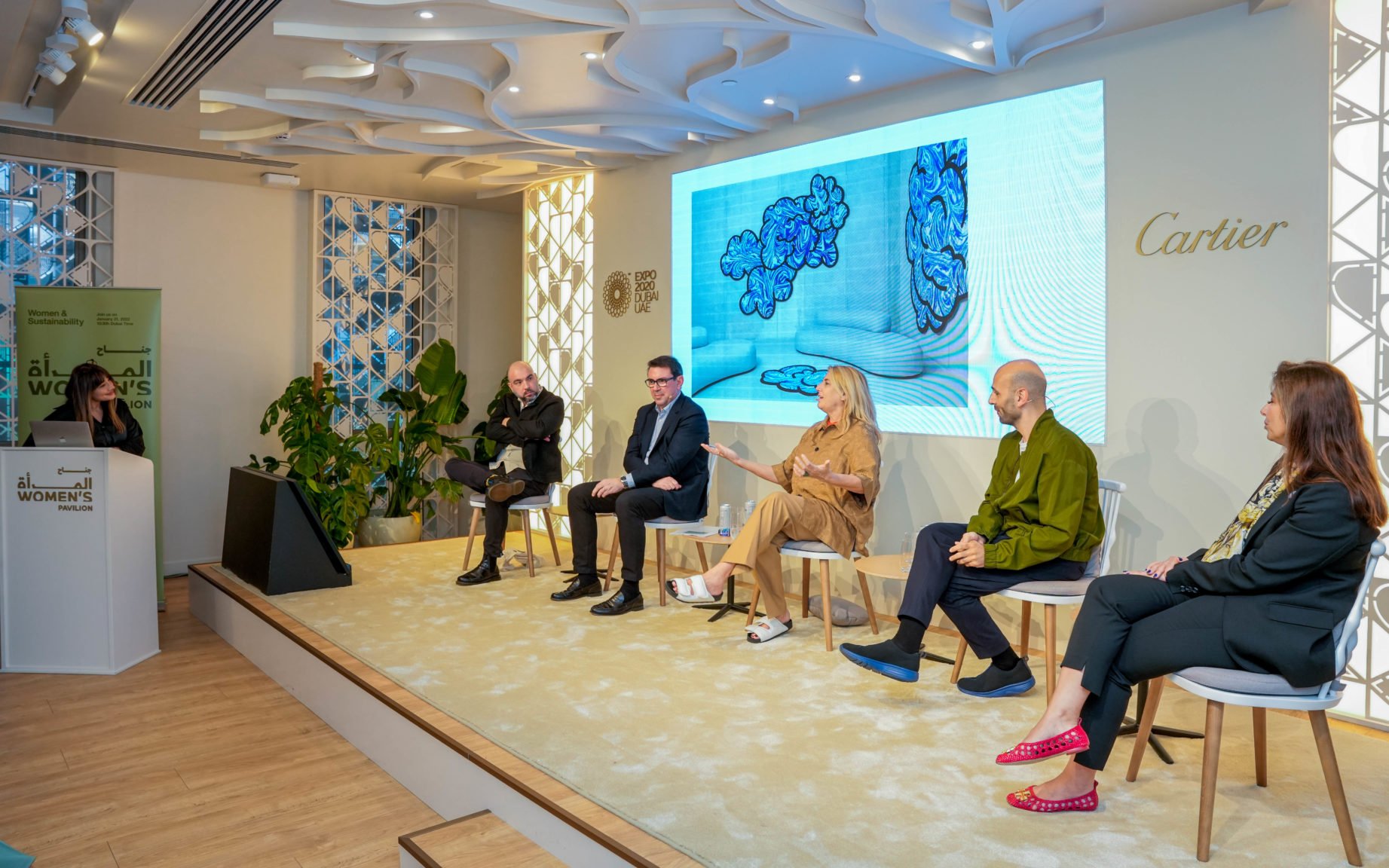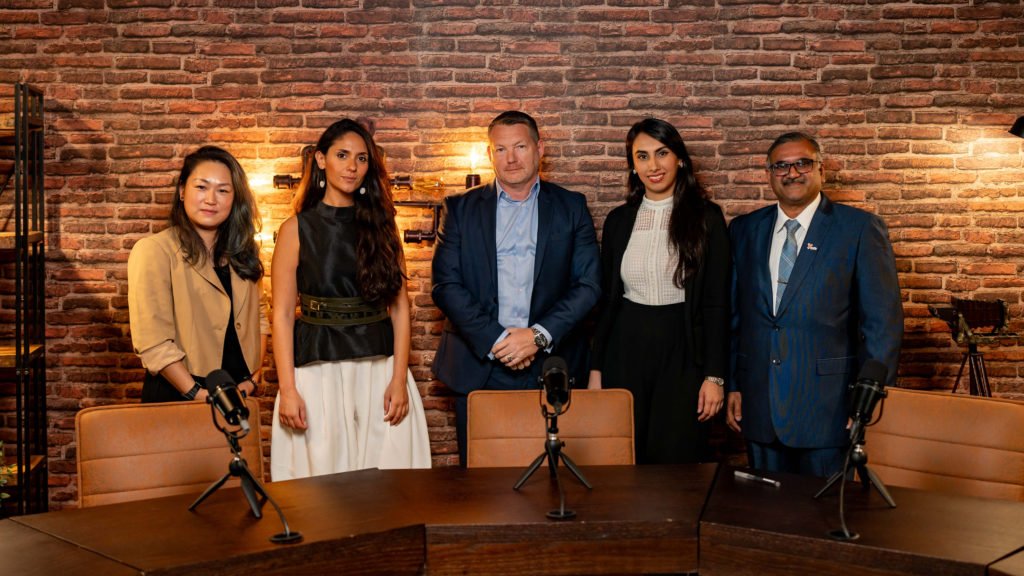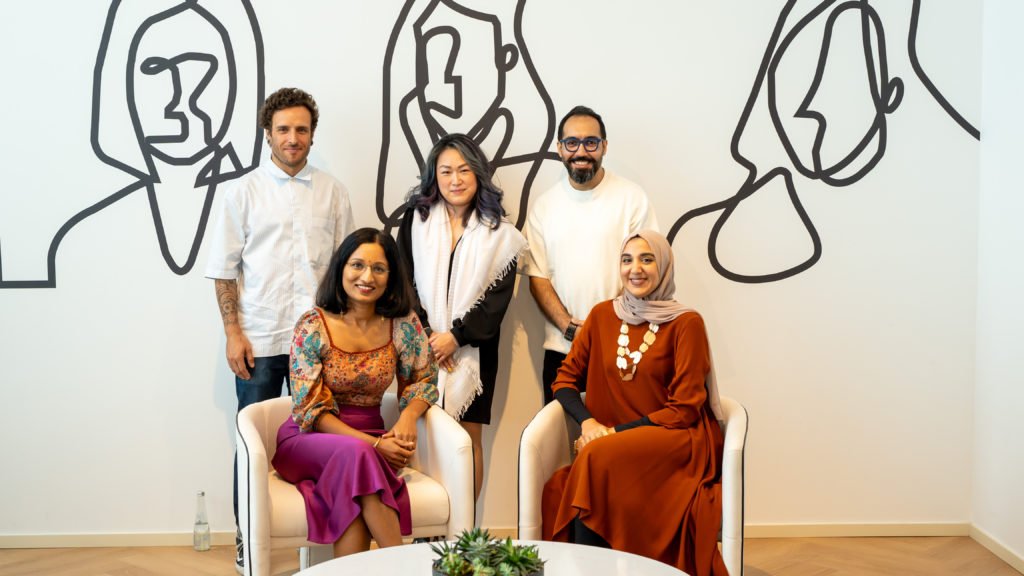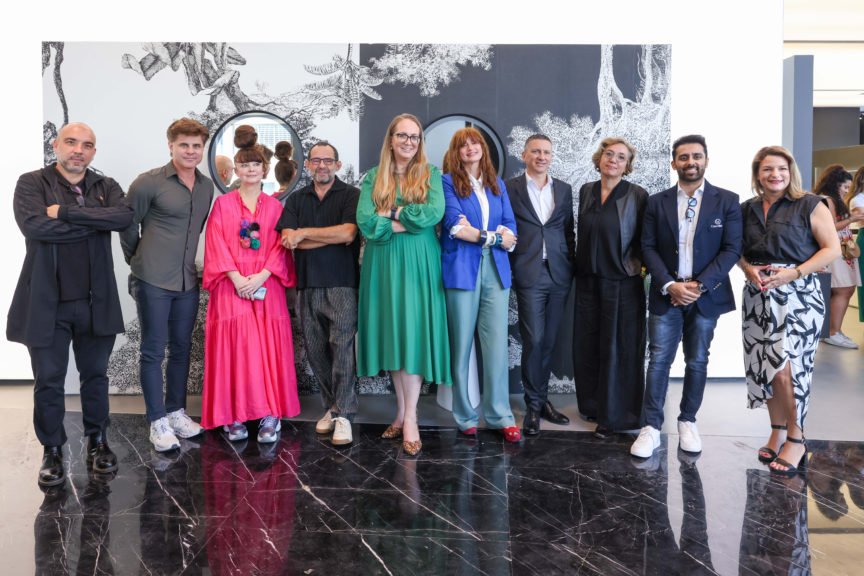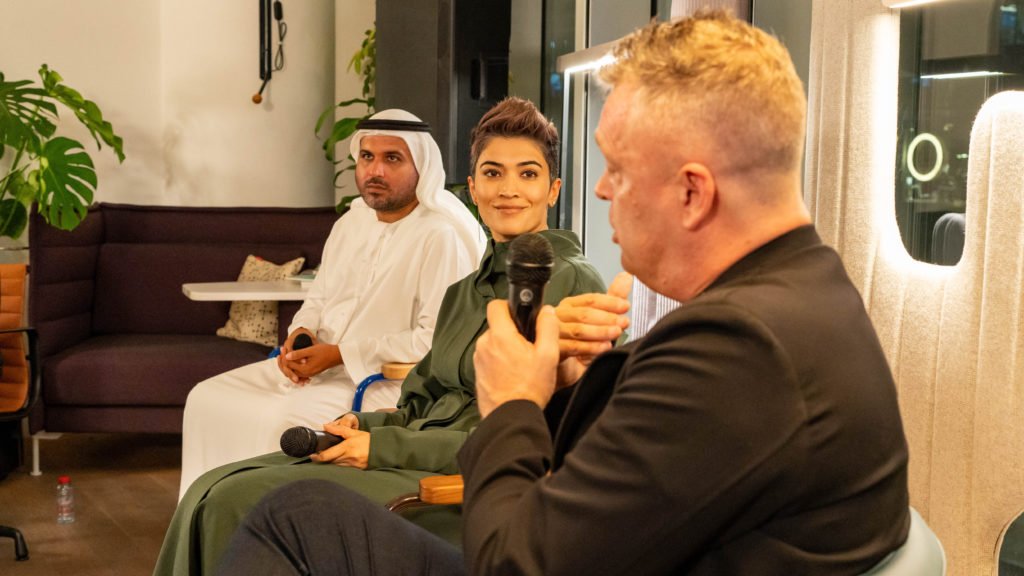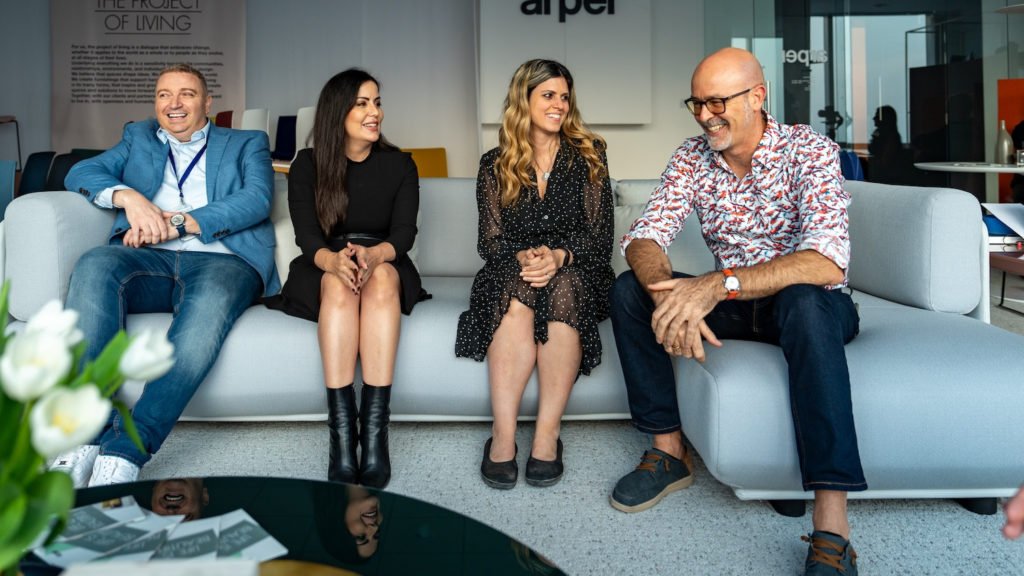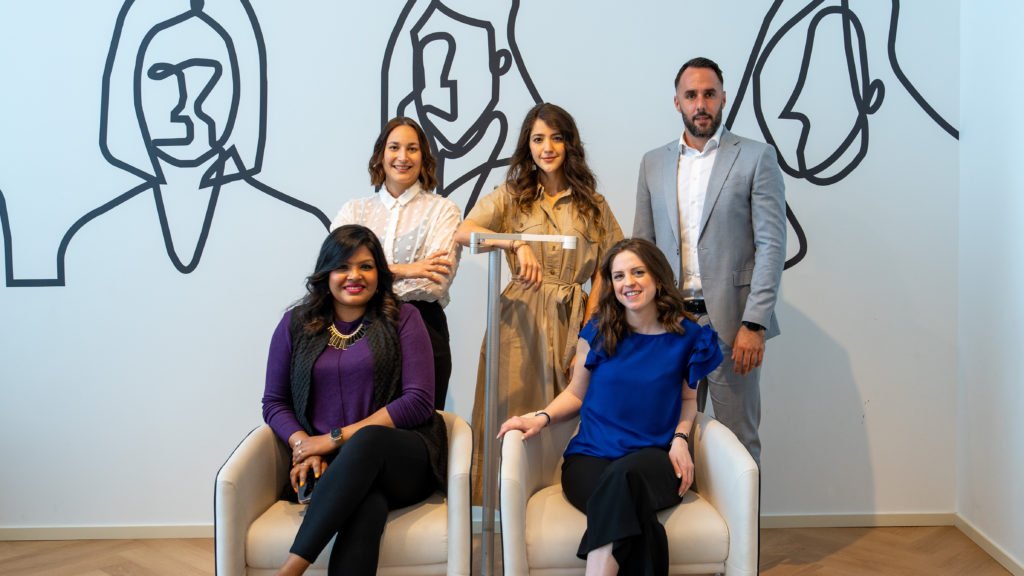Women have always had an important and indisputable role in society. In some cases, the influence has been more subtle than explicit, but no matter what the industry, culture, or country, women have always been a huge influence on our progress in general. In any part of the world, women have fought through barriers proving to the world and more importantly to themselves, that not only are they not weak, they’re more than equal.
During Global Goals Week, to celebrate the power of this gender and the efforts of A&D in creating a sustainable environment for us to thrive, Andreu World hosted a panel discussion at the Women’s Pavilion in the Sustainability section of EXPO 2020 – we could not think of a more fitting venue.
The panel, comprising global leaders and experts, discussed the role of women and their efforts in creating a sustainable and safe environment for us from four different approaches – architecture, design, education, and business.
THE EXPERTS
From left to right: Samer Yamani, Design Curator, MENASA – Expo 2020 Dubai; Patricia Urquiola, Owner, Studio Urquiola; Jesús Llinares, Chief Executive Officer, Andreu World; Dina Storey, Head of Sustainability Operations, EXPO 2020 Dubai; Juan Roldán, Associate Professor, American University of Sharjah
Designing for Sustainability Through Local Culture
“I strongly believe that the way we have to do anything now and in the future is not through a manifesto – that was how we did it in the last century,” says Patricia Urquiola, a renowned international presence in the global product design sphere, who had flown to Dubai for the very purpose of participating in this talk. “To communicate and design well now involves dialogue. and the only way is through a discussion. I think this is fundamental in understanding the way we are going to approach all the new situations that we have to change in such a short time.”
A keen proponent of sustainable practices, Patricia explains how she cannot design an object anymore without re-imagining every aspect of the entire production cycle – packaging, transport, future life. Her presentation highlighted the fact that everything is constantly changing, and non-renewable materials have to be continuously re-invented and upcycled, until our society reaches a fully sustainable system.
Her latest launch in collaboration with Andreu World was the Nuez Lounge BIO® armchair. Patricia explains her inspiration for this piece. “The Nuez Lounge BIO® is the natural prosecution of the first Nuez collection, a path that we started already some years ago. I worked intensely with Andreu World to apply a circular approach to Nuez, focusing not only on the materials, but also on simplified, disassembled possibilities that can prolong the product’s life cycle. This was how Nuez Lounge BIO® was designed and developed, utilising a 100 percent recyclable thermopolymer of natural origin. We are very proud of the result and are willing to proceed on this route.”
Her project, H2O, developed with the city of Bilbao and Oxfam International, helped build water wells in Ethiopia, simply so girls from surrounding villages could go to school instead of spending their days collecting water from far sources. She also collaborated with GAN to produce rugs in India that were made entirely by women in small modular dimensions and reasonable weight, easily allowing them to be produced at home, thus giving women a chance to raise their children and work alongside.
“Our work as designers is to create new connections, that is the way for me as a woman. A woman’s opinion generally has the provision of diversity, and an understanding that we are allowed to not be afraid of diversity, to be really open to understanding that we are all different but alike at the same time. There are lots of micro situations that we have to be very curious to understand, and can be used to empower us.”
“Our work as designers is to create new connections, that is the way for me as a woman. A woman’s opinion generally has the provision of diversity, and an understanding that we are allowed to not be afraid of diversity, to be really open to understanding that we are all different but alike at the same time.”
– Patricia Urquiola, Designer, Architect and Global Design Entity
Design Curator of MENASA – Expo 2020, Samer Yamani’s collaboration with the local cottage industry was a labour of love. “Sustainability to me goes beyond materials,” says Samer in his role. “For me, it was all about involving the heritage and culture of the UAE, especially when designing elements of the EXPO 2020.” He further goes on to explain the importance of women in the context of sustainability. “I had to become friends with the local ladies of the tribe and get into their inner circle, be it via Whatsapp or Instagram. The UAE is so advanced, but we don’t have a system where we can integrate local elements of culture in our designs. By following a process where we learn and include these elements into design and sustainability, we learn to develop a lot of respect for the culture. And I think sustainability should be tackling aspects like how we can preserve the culture yet try to integrate it into modern life.
Samer explains the value of design as a fantastic communication tool that can be used to teach the world about regional culture. “For me, as a curator at MENASA, I tried to select the best stories from the country to be transmitted through the design collection, where human values from all over the world can be represented. In this case, it was about women empowerment, and sustainable development, and the circular economy that we’ve all been working to achieve.”
Building a Sustainable EXPO
“We wanted the EXPO 2020 to be one of the most sustainable expos in history, so what would that entail?” explains Dina Storey, Head of Sustainability at EXPO 2020, of her journey at the start of the expo. “We started breaking down the meaning of this into key elements, one of them being that we leave behind a legacy of sustainable infrastructure. The second was for EXPO to have a social and environmental impact beyond the six months and beyond the boundaries of this site.”
Dina goes on to fill us in on the fact that the workforce gender ratio at the EXPO comprises 50 percent women. “And we report on that from a social perspective, plus the majority of the leadership are women, including Her Excellency, Reem Al Hashimi who is the Managing Director. When we started building, it wasn’t with the aim of gathering more women, or that there was a quota to follow. It just happened to be that women came forward and wanted to be a part of this project.
“We talk a lot about the role of women in sustainability, and I often get asked, ‘How did you get into sustainability?’. I have to say, I got into it, because something in me wanted better for my children in the future. At the time, I didn’t know what the word sustainability meant. When I started my career, I was a chemical engineer, and then I worked in the financial sector. A part of me wanted to just move away from all of that and focus on something that gave me hope. And now, I’ve been working in this sector for about 18 years. As a woman, I have had to try much harder, but I am here to affirm that we can still do it. I think that the lesson here is that while sustainability is growing as a profession, the truth is that this is one job where we are working towards a world where it becomes redundant. Because sustainability will one day become so integrated into everything that a sustainability professional will no longer be needed.”
Sustainability and Education, Sharing the Same Goals
Juan Roldan, Associate Professor at American University of Sharjah’s College of Architecture & Art, gives us his perspective from his years of experience in the education sector within the region. “Our personal goals, and this has been happening over the last eight years in the university system, has been to expand and break a lot of the glass walls between academia and professional lives. We have been introducing educational elements that have goals aligned with sustainability at many levels. They transverse in a vertical way that has to do with the empowerment of our students. We try to go beyond the classroom. We have an average of 70 percent women in the architecture program, and over 90 percent in interior design. Instead of just memorising all the points that make up a sustainable project, we approach this with a little more common sense.
Juan tells us how this has benefited his graduates. “The educational model we have implemented in the last few years has created several design leaders with many of them opening their own practices. Our students are even engaged in furniture design now. We recognise that we’re not simply one element in the food chain but part of a greater ecosystem, and we have them collaborate and work on real projects with professionals out there in the field. They work with deadlines and understand what the industry is actually about. We’ve also introduced new spaces that have been designed by my students using sustainable materials and sustainable practices. In the end, it’s all about breaking glass barriers and introducing students to the real world.”
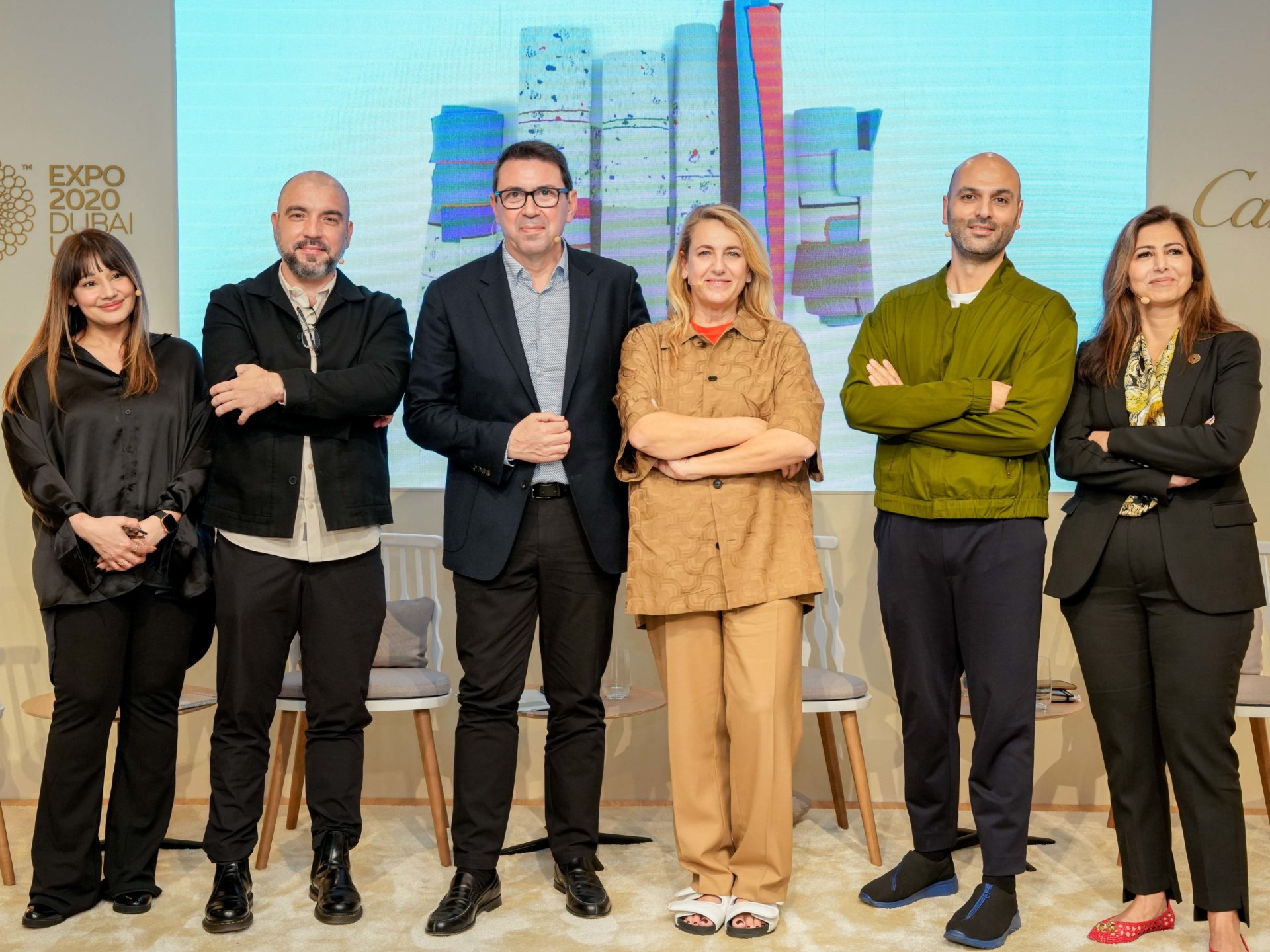
Bringing it All Together
“Women have been kept out of the road of progress for a long time,” says Jesus Llinares, CEO of Andreu World, voicing the brand’s commitment to the cause. “In many minorities women have kept alive an incredible connection to their craft. We believe that they need exposure and representation as well. We also need more crossover between design and other professions, especially for women. We have to think beyond technology and connect technology to other subjects, like philosophy, which can better connect women and design.”
Jesus touches upon the very key aspect that there needs to be a meeting place of minds with the broader concept of design. “We also need a lot of references that people, especially women, can lean on for support, such as equality and role models to inspire and support women. Not only in design, but in other areas as well.”
We ask him his thoughts on the main challenges faced as a manufacturer of sustainable design.
“Everything starts with leadership,” says Jesus. “We take a look at our philosophy, principles and values before looking into materials, and we have to make sure to understand the problem and then want to change it. We then work with suppliers and other professionals on this. It’s hard but it’s a beautiful challenge, and it is also a privilege to work towards accomplishing this. Now is definitely the time to make this change.
“Our responsibility translates into sustainability in all aspects of Andreu World,” Jesus continues, talking about Andreu World’s holistic adoption of sustainable practices. “It allows us to create products through eco design, where we study and optimise processes and materials for each new collection, addressing subsequent production efficiently. We work with 100 percent FSC® sustainable wood. For us, wood is not only a natural and renewable resource or a warm and noble material, but it is also a work attitude and knowledge that has been passed down from generation to generation. In this transmission of knowledge (of trades, crafts and culture of production and manufacturing) the role of women is key.
On the brand’s collaboration with Patricia Urquiola, Jesus says, “We work with the best designers around the world. Designers like Patricia Urquiola are the first promoters of their commitment to the environment and sustainability. This motivation joins ours and together we achieve unique and innovative designs.”
Nuez lounge Bio is probably one of the most sustainable upholstered furniture designed to date. The Pure Eco interior is a 100 percent recycled and recyclable polymer, and the chair is upholstered with the new Circular ONE® fabric made from PET bottle plastics and textile waste. The central base in ash wood is also 100 percent FSC®. Its Eco Design not only adjusts the consumption of materials and processes but is created without the use of glues, allowing it to be easily taken apart to repair or reupholster, thus prolonging its life. “With it, a new and comfortable path towards sustainability is opened within the parameters of the circular economy of materials,” adds Jesus.
“We take a look at our philosophy, principles and values before looking into materials, and we have to make sure to understand the problem and then want to change it. We then work with suppliers and other professionals on this. It’s hard but it’s a beautiful challenge, and it is also a privilege to work towards accomplishing this. Now is definitely the time to make this change.”
– Jesus Llinares, CEO of Andreu World
Speaking on the topic of sustainability in design and manufacturing, Samer reveals that local craft is possibly as sustainable as it gets. “It has zero waste because a smart craftsman uses every single centimeter of material available. When you are working with local communities, you are cutting all these supply chains and therefore achieving another level of sustainable design. Corona was a real challenge for all of us, but it also offered a great opportunity to find local resources to replace international ones. At MENASA, we worked towards integrating local communities back into modern society, and these ladies were so proud to see their work represented alongside major global players.”
Dina looks into history as a learning tool. “There are so many approaches we can take to sustainable design, and so many things we can learn from the past. Being from Iraq, I remember my grandparents’ home where there was no air conditioning to counter the sweltering heat. However, the house was designed around a central courtyard that allowed passive air to circulate through all the rooms. This is what we aimed to replicate with the walkways at the EXPO. The design methods in the past upheld a sustainable view and I think there are great learnings from that. A sustainable city doesn’t just mean the buildings or the infrastructure. It’s the people, the community, and the society. I think some of the most important aspects about it focus on creating a human centric space.”
In the end, it boils down to education and culture. “These two elements form the core of our efforts towards supporting women and our sustainability goals,” says Juan. “And I think the UAE is THE place to be at this moment. There’s a maturing design community that is gathering momentum. In the last few years, we have witnessed processes becoming more streamlined. Culture and education are changing things. I remember in my first year at teaching, when I encouraged my students to recycle or reduce landfill, I learnt through experience that women don’t go to landfills or industrial waste sites. But through education, that has changed over the last eight years. It’s very rewarding to see in that sense, to see how our dedication to changing mindsets have finally born fruit. Education has become a launch platform for many of these women to enter a new way of thinking and doing.”

